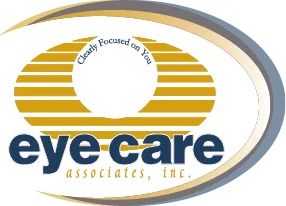Comprehensive Retina Care Available
At Eye Care Associates Inc., we understand the importance of maintaining the retina's health, a critical component of the visual system responsible for capturing and processing light signals. Our experienced team of eye care professionals provides comprehensive retina care services at our multiple locations serving Austintown, Youngstown, Howland, and Poland. From diagnosing and managing retinal conditions to offering advanced treatments, we are committed to preserving vision and enhancing the quality of life for our patients.
Understanding Retinal Problems:
The retina is a thin layer of tissue located at the back of the eye that contains millions of light-sensitive cells called photoreceptors. These cells convert light into electrical signals, which are then transmitted to the brain via the optic nerve, allowing us to see. However, various factors, including age, genetics, and systemic health conditions, can lead to retinal problems that affect vision and overall eye health.
Common Retinal Conditions:
- Age-Related Macular Degeneration (AMD): AMD is a progressive eye disease that affects the macula, the central part of the retina responsible for sharp, central vision. It can lead to loss of central vision, making it difficult to read, drive, or recognize faces.
- Diabetic Retinopathy: Diabetic retinopathy is a complication of diabetes that affects the blood vessels in the retina. It can cause leaking of blood and fluid into the retina, leading to vision loss if left untreated.
- Retinal Detachment: Retinal detachment occurs when the retina pulls away from its normal position, leading to vision loss and potential blindness if not promptly treated.
- Retinal Tears and Holes: Retinal tears and holes can occur due to trauma or age-related changes in the vitreous, the gel-like substance that fills the inside of the eye. Retinal tears and holes can lead to retinal detachment and vision loss if left untreated.
- Macular Holes: Macular holes are small breaks in the macula that can cause blurred or distorted central vision.
Comprehensive Retina Care Services
- Diagnostic Testing: We offer a wide range of advanced diagnostic tests to evaluate the health and function of the retina, including optical coherence tomography (OCT), fluorescein angiography, fundus photography, and electroretinography (ERG).
- Treatment Options: Depending on the specific retinal condition, treatment options may include intravitreal injections, laser therapy, cryotherapy, or surgical procedures such as vitrectomy or retinal detachment repair.
- Macular Degeneration Management: Our team manages age-related macular degeneration, offering personalized treatment plans to slow disease progression and preserve vision.
- Diabetic Retinopathy Management: We provide comprehensive care for diabetic retinopathy, including regular eye exams, diabetic management, and treatment options to prevent vision loss and complications.
Schedule Your Retina Evaluation Today
If you are experiencing symptoms of a retinal problem or have been diagnosed with a retinal condition, call us at (330) 746-7691 to schedule an appointment for a comprehensive retina evaluation at Eye Care Associates Inc. Our experienced retina specialists will perform a thorough assessment and develop a personalized treatment plan to protect your vision and preserve the health of your eyes. Trust your eyes to the experts who are dedicated to providing compassionate care and innovative treatments for retinal conditions.
